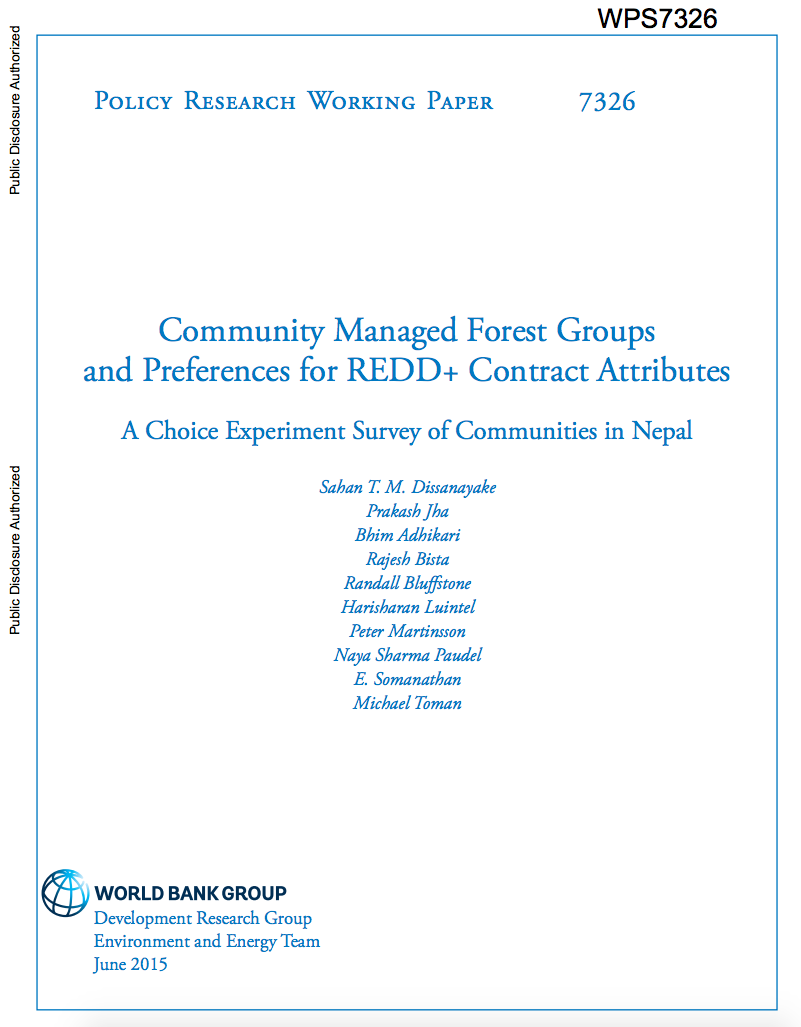Community Managed Forest Groups and Preferences for REDD+ Contract Attributes
A significant portion of the world’s
forests that are eligible for Reducing Emission from
Deforestation and Forest Degradation, known as REDD ,
payments are community managed forests. However, there is
little knowledge about preferences of households living in
community managed forests for REDD contracts, or the
opportunity costs of accepting REDD contracts for these
communities. This paper uses a choice experiment survey of


